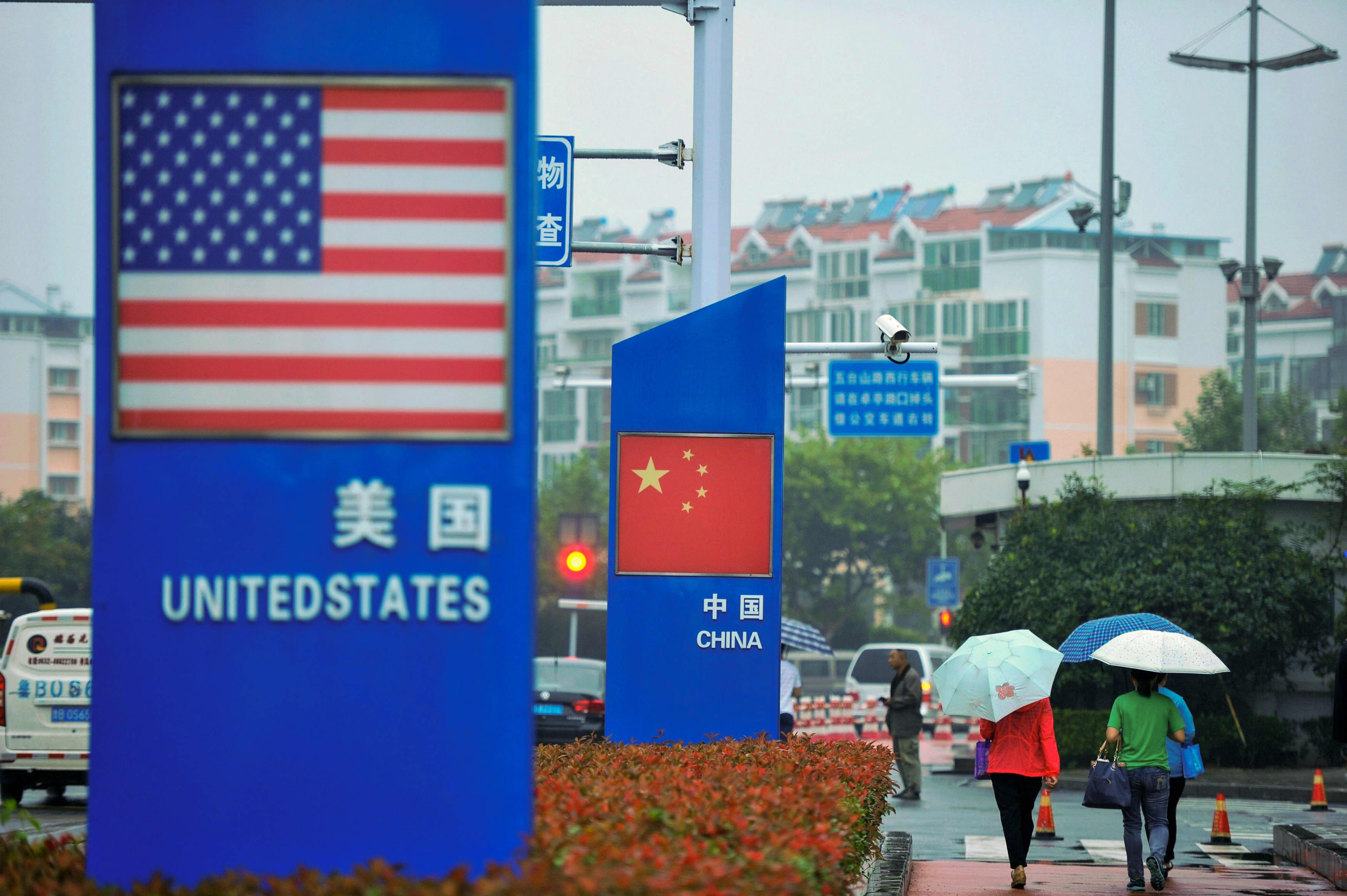Signs with the U.S. and China flags are seen outside a store selling foreign goods in Qingdao, in eastern China’s Shandong province, on September 19, 2018.
AFP | Getty Images
SINGAPORE – Southeast Asian support for the United States appeared to increase after Joe Biden won the presidential election, according to an annual survey by the ISEAS Yusof-Ishak Institute in Singapore.
The Southeast Asian state survey released last week found that 61.5% of respondents are in favor of aligning themselves with the United States rather than China if the region is forced to choose sides. This represents an increase of 53.6% who chose the US instead of China in the same survey as the previous year.
“The region’s support for Washington may have increased due to the prospects of the new Biden government,” said the survey results report.
The responses to the latest poll were collected from November 18 last year to January 10 this year – after Biden’s projection of defeating Donald Trump in the election, but before he took office as president.
The survey involved more than 1,000 respondents from all 10 member states of the Association of Southeast Asian Nations, or ASEAN. Respondents include government officials, entrepreneurs, as well as academy analysts, think tanks and research institutions.
Comparing country-level data, the majority of respondents from seven Southeast Asian countries chose the United States over China in the latest survey. That’s an increase of three in the previous edition, with Cambodia, Indonesia, Malaysia and Thailand switching sides.
Despite this, the largest proportion of respondents chose China – rather than the USA, ASEAN and others – as the most influential power in Southeast Asia.
About 76.3% of respondents chose China as the most influential economic power, while 49.1% chose China as the most influential political and strategic power.
Meaning of Southeast Asia
Southeast Asia has been caught in the middle of the US-China competition in recent years.
The region is home to more than 650 million people and some of the fastest growing economies in the world. Its proximity to the South China Sea – a vital commercial shipping route through which trillions of dollars of world trade pass – increases its strategic importance.
The United States has been an important presence in the region for many years through economic and security commitments. But during Trump’s term, the U.S. withdrew from the Trans-Pacific Partnership – a mega trade pact that included several Southeast Asian countries – and senior US government officials were absent at some major regional summits.
This apparent lack of interest from the United States in recent years has coincided with China’s more aggressive drive in the region through programs that included investments in infrastructure under the Belt and Road Initiative.
But the latest ISEAS survey found that the majority of respondents – about 68.6% – were optimistic that the United States under Biden’s command would increase their involvement in Southeast Asia. This compared with a year ago, when 77% thought that US involvement would decrease, the survey showed.
The region’s confidence in the USA also jumped from 30.3% a year ago to 48.3% in the last survey.
“Only time will tell whether the region’s renewed confidence in the United States is wrong or not,” says the report.
The first signs showed that the Biden government would focus more on the region in the coming years.
The president reinforced his foreign policy team with experts in Asia, while US Secretary of State Antony Blinken – in a liaison with his Filipino counterpart – pledged to “support” Southeast Asian countries against Chinese pressure in the South China Sea .
